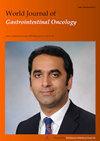全面分析肝癌 ING 家族基因的临床和生物学价值
IF 2.5
4区 医学
Q2 GASTROENTEROLOGY & HEPATOLOGY
引用次数: 0
摘要
背景 肝癌(LIHC)是一种发生在肝脏的恶性肿瘤,在癌症中死亡率很高。ING家族基因被认定为肿瘤抑制基因。这些基因的表达失调可导致细胞周期停滞、衰老和/或凋亡。ING家族基因是很有希望的抗癌治疗靶点。然而,人们对它们在 LIHC 中的作用仍不甚了解。目的 更好地了解ING家族成员在LIHC中的重要作用。方法 应用一系列生物信息学方法(包括基因表达分析、基因改变分析、生存分析、免疫浸润分析、ING1上游微RNA(miRNA)和长非编码RNA(lncRNA)预测以及ING1相关基因功能富集分析)研究ING在LIHC中的表达谱、临床关系、预后意义和免疫浸润。研究还探讨了ING家族基因在LIHC中的表达与肿瘤相关免疫检查点之间的关系。初步探讨了ING1介导肝癌发生的分子机制。结果 在不同的数据库中分析了不同ING家族基因在LIHC中的mRNA/蛋白表达,结果显示ING家族基因在LIHC中高表达。在来自 366 例 LIHC 患者的 47 份样本中,ING 家族基因的改变率为 13%。通过全面分析ING家族基因的表达、临床病理参数和预后价值,确定了ING1/5。ING1/5与LIHC的不良预后有关,表明它们可能在LIHC肿瘤的发生和发展中起着关键作用。ING1的靶miRNA之一是hsa-miR-214-3p。我们还发现了hsa-miR-214-3p的两个上游lncRNA:U91328.1和HCG17。同时,我们发现 ING 家族基因的表达与免疫细胞浸润和免疫检查点基因相关。结论 本研究为进一步研究ING家族基因在LIHC治疗和预后中的潜在机制和临床价值奠定了基础。本文章由计算机程序翻译,如有差异,请以英文原文为准。
Comprehensive analysis of clinical and biological value of ING family genes in liver cancer
BACKGROUND
Liver cancer (LIHC) is a malignant tumor that occurs in the liver and has a high mortality in cancer. The ING family genes were identified as tumor suppressor genes. Dysregulated expression of these genes can lead to cell cycle arrest, senescence and/or apoptosis. ING family genes are promising targets for anticancer therapy. However, their role in LIHC is still not well understood.
AIM
To have a better understanding of the important roles of ING family members in LIHC.
METHODS
A series of bioinformatics approaches (including gene expression analysis, genetic alteration analysis, survival analysis, immune infiltration analysis, prediction of upstream microRNAs (miRNAs) and long noncoding RNAs (lncRNAs) of ING1 , and ING1 -related gene functional enrichment analysis) was applied to study the expression profile, clinical relationship, prognostic significance and immune infiltration of ING in LIHC. The relationship between ING family genes expression and tumor associated immune checkpoints was investigated in LIHC. The molecular mechanism of ING1 mediated hepatocarcinogenesis was preliminarily discussed.
RESULTS
mRNA/protein expression of different ING family genes in LIHC was analyzed in different databases, showing that ING family genes were highly expressed in LIHC. In 47 samples from 366 LIHC patients, the ING family genes were altered at a rate of 13%. By comprehensively analyzing the expression, clinical pathological parameters and prognostic value of ING family genes, ING1/5 was identified. ING1/5 was related to poor prognosis of LIHC, suggesting that they may play key roles in LIHC tumorigenesis and progression. One of the target miRNAs of ING1 was identified as hsa-miR-214-3p. Two upstream lncRNAs of hsa-miR-214-3p, U91328.1, and HCG17, were identified. At the same time, we found that the expression of ING family genes was correlated with immune cell infiltration and immune checkpoint genes.
CONCLUSION
This study lays a foundation for further research on the potential mechanism and clinical value of ING family genes in the treatment and prognosis of LIHC.
求助全文
通过发布文献求助,成功后即可免费获取论文全文。
去求助
来源期刊

World Journal of Gastrointestinal Oncology
Medicine-Gastroenterology
CiteScore
4.20
自引率
3.30%
发文量
1082
期刊介绍:
The World Journal of Gastrointestinal Oncology (WJGO) is a leading academic journal devoted to reporting the latest, cutting-edge research progress and findings of basic research and clinical practice in the field of gastrointestinal oncology.
 求助内容:
求助内容: 应助结果提醒方式:
应助结果提醒方式:


